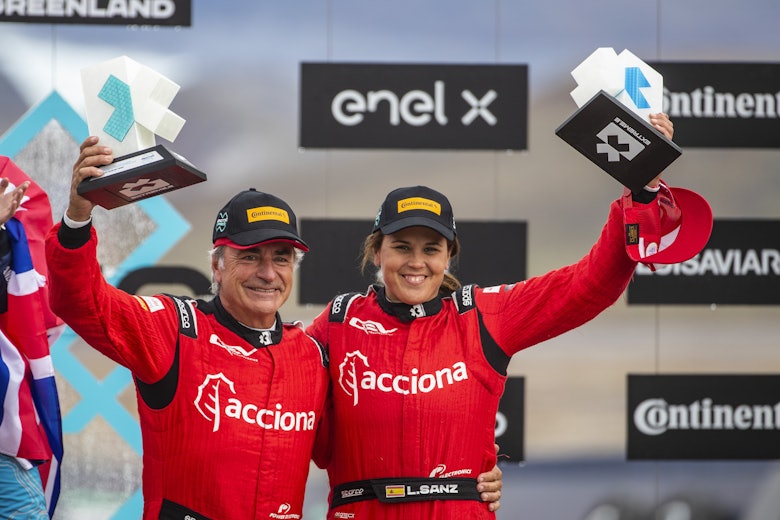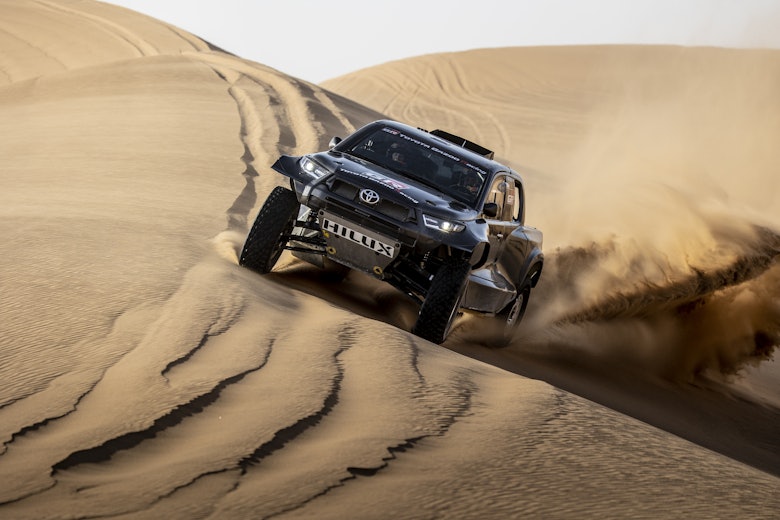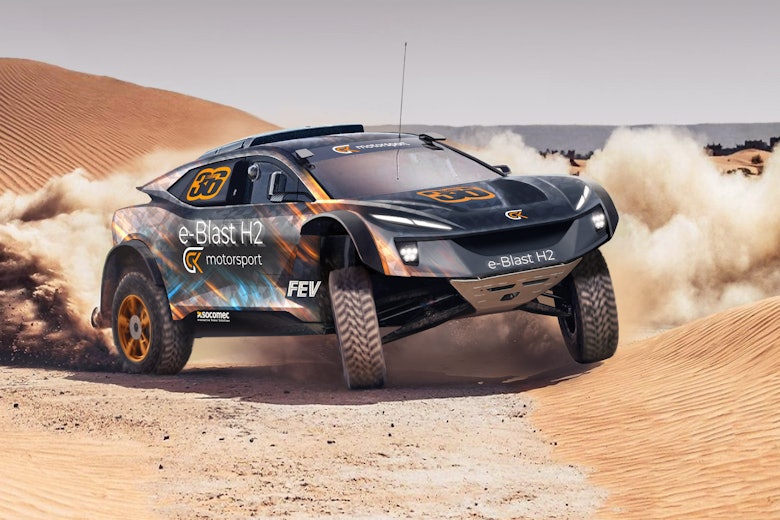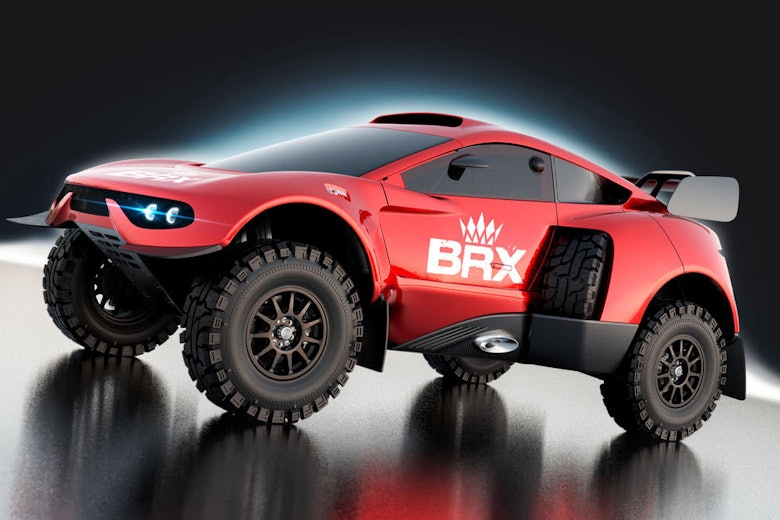Audi’s Dakar Rally recruit Carlos Sainz believes there will be fewer navigational issues on next year’s edition due to the unique characteristics of the electric RS Q e-tron machine he will drive.
Sainz endured a troublesome 2021 Dakar, during which he lost over half an hour in the opening week due to struggles with the electronic roadbook which was trialed in 2020 and rolled out across the car category this year.
Having won the ’20 event, Sainz’s frustrations began to boil over after yet more navigational problems, leading the triple Dakar winner and two-time World Rally Champion to label it as ‘more gymkhana than rally raid’.
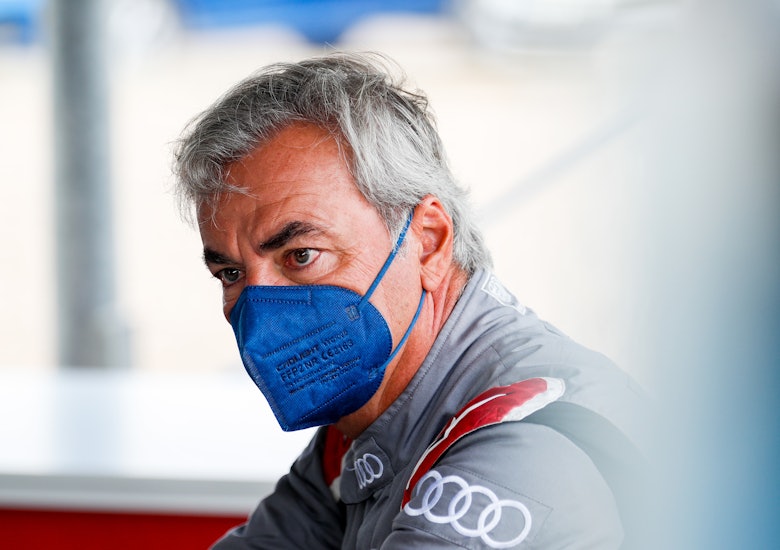
Now, with Audi’s electric-powered T1+ prototype, Sainz reckons that the nature of the car’s transmission – featuring just one gear – will allow he and co-driver Lucas Cruz to focus more on the navigational element of the Dakar rather than the driving side.
“We have many positive things about the new car, for example there is no gearbox so when you are driving you don’t need to worry about which gear you are in approaching the dune,” Sainz told DirtFish.
“The dunes in particular are always difficult, so normally [when you have a gearbox] you are thinking ‘OK, which gear should I be in, first or second?’ and it is easy to pick the wrong one and get stuck.
“And with the electric car and no gears, you don’t need to change anything. You just need to accelerate up or down and just concentrate on the driving, which for me is the most important.
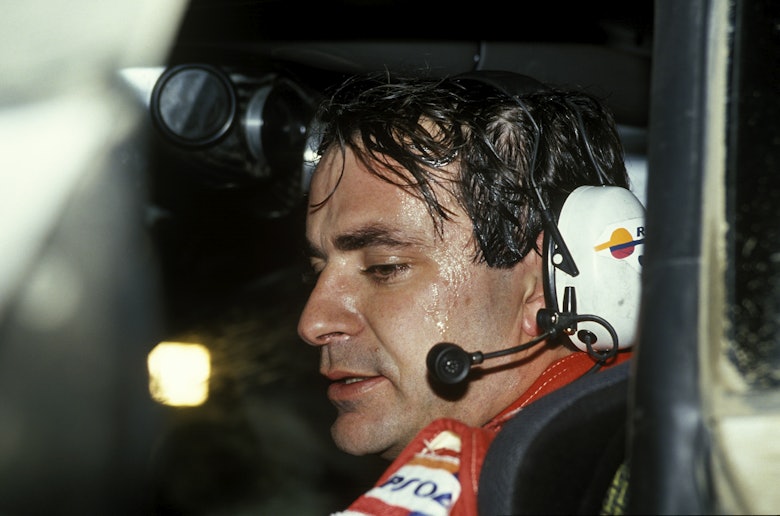
“When you are focused, you can analyze which way to drive over the dunes, you don’t have to worry about the wheelspin and then also physically, changing up and down gears all day is very tiring which can lead to mistakes.”
Although Sainz is optimistic that his navigational woes may now be firmly put to rest, the complexities of the RS Q e-tron mean that he has had to get to grips with the new technology, despite having some experience of electric power in Extreme E.
“Of course, there are some similarities between this car and the XE car, but you cannot compare the two really,” Sainz explained.
“XE cars do about 15km in the races while the Dakar car is made to do 500km, so the demands are so much different.
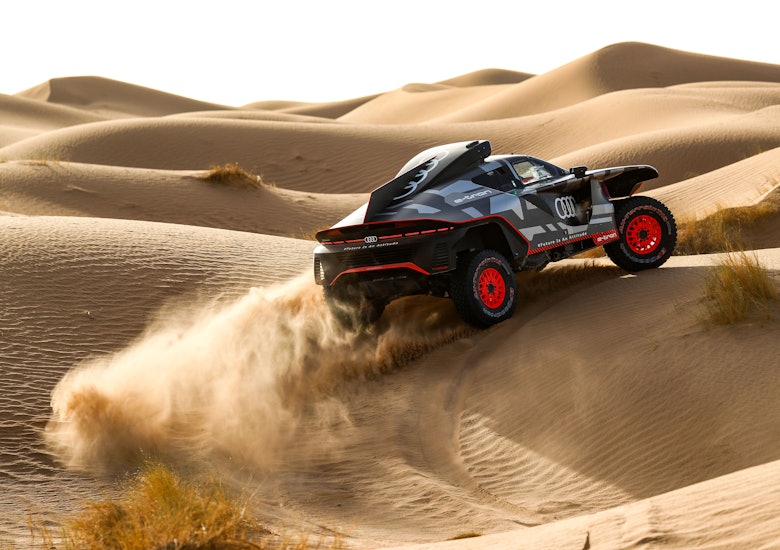
“I learned a lot about this new car: the power is always there, but you need to work a lot on the powertrain, the software, the virtual differential, the engine recuperation in the braking… so there is a lot to understand. The complexity of the car is big, there are a lot of sensors, much more than in a normal car so we have to know all of this before the first race.”
Audi’s build-up to its first attempt at the Dakar as a full factory operation continues to progress, with the Q Motorsport-run project electing to skip the upcoming Rallye du Maroc – which started on Friday and is due to finish on Wednesday (October 13 – in place of more testing ahead of an expected participation in the Ha’il Baja in December.
Taking part in the Rallye du Maroc is Toyota’s Nasser Al-Attiyah in a privately run older-spec Hilux, while Sainz’s Audi team-mate Mattias Ekström will add to his rally raid experience in an X-raid Mini John Cooper Works Rally.



